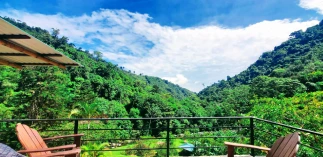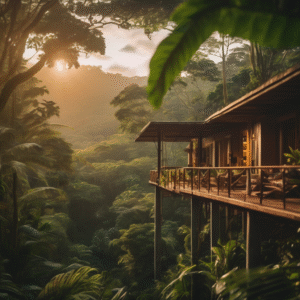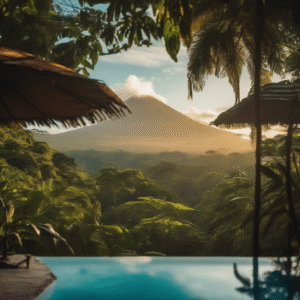High in the canopy, a flash of yellow catches your eye. But wait, it isn’t a bananaquit or a toucan. As it dips back into the foliage, a hint of blue-gray peeks through. You’ve just encountered the elusive MacGillivray’s warbler, a seasonal visitor to Costa Rica’s mountainous havens.
While not as brazen as some of their tropical neighbors, MacGillivray’s warblers hold a certain charm. Here at our mountain retreat, nestled amidst the emerald embrace of Costa Rica’s highlands, these little enigmas flit through the understory, offering a glimpse into their fascinating world.
A Dashing Drifter
Unlike many resident birds, MacGillivray’s warbler is a migratory marvel. They breed in the temperate forests of western North America and Canada, gracing Costa Rica with their presence during the winter months. From September to April, these little globetrotters become cryptic residents in our lush mountain retreats.
A Chunky Charmer
Despite their long journeys, MacGillivray’s warblers are no shrinking violets. These are stocky, medium-sized songbirds, with a build more reminiscent of a wren than a slender warbler. Adult males are the true stars of the show. They sport a dashing blue-gray hood that extends down their chest, a stark contrast to their bright yellow underparts. Black lores (the area between the eye and bill) frame their eyes, accentuated by crisp white crescents above and below. Females and immature birds are nieco duller, with a grayish hood and a less pronounced yellow breast.
A Song Unheard
While their plumage is captivating, MacGillivray’s warblers are more subtle singers. Unlike their close relative, the Mourning Warbler, these winter visitors tend to be quieter travelers. However, during the breeding season up north, males become vocal acrobats, belting out complex songs from hidden perches. Here in Costa Rica, you might be lucky enough to hear their soft, high-pitched “tsik” calls as they forage for insects in the dense undergrowth.
A Master of the Understory
MacGillivray’s warblers are true denizens of the lower layers of the forest. Unlike the toucans and parrots that favor the high canopy, these birds flit through the dense vegetation near the ground, meticulously searching for insects and spiders. Their short legs and strong feet make them adept at hopping and scrambling through the undergrowth, a skill perfectly suited to their secretive lifestyle.
A Spot of Birding Bliss
Spotting a MacGillivray’s warbler can be a delightful challenge. Their preference for the lower forest and their tendency to stay hidden can make them difficult to observe. But patience and a keen eye are all you need. Here at our mountain retreat, the dense foliage and abundant insect life create the perfect winter habitat for these shy visitors. With a little guidance from our experienced birding guides, you might just catch a glimpse of this special seasonal resident.
So, as you explore the verdant tapestry of our mountain retreat, keep your eyes peeled for a flash of yellow amidst the emerald green. With a bit of luck, you might just encounter the enigmatic MacGillivray’s warbler, a fleeting visitor that adds a touch of wonder to Costa Rica’s mountainous paradise.
For more information, please view our comprehensive guide about the birds of Costa Rica







